Discover 20 hidden attractions, cool sights, and unusual things to do in Myanmar. Don't miss out on these must-see attractions: Shwedagon Pagoda (Yangon), Ananda Temple (Bagan) or Mandalay Palace (Mandalay).
Below, you can find the list of the most amazing places you should visit in Myanmar.
Table of Contents
Shwedagon Pagoda, Yangon
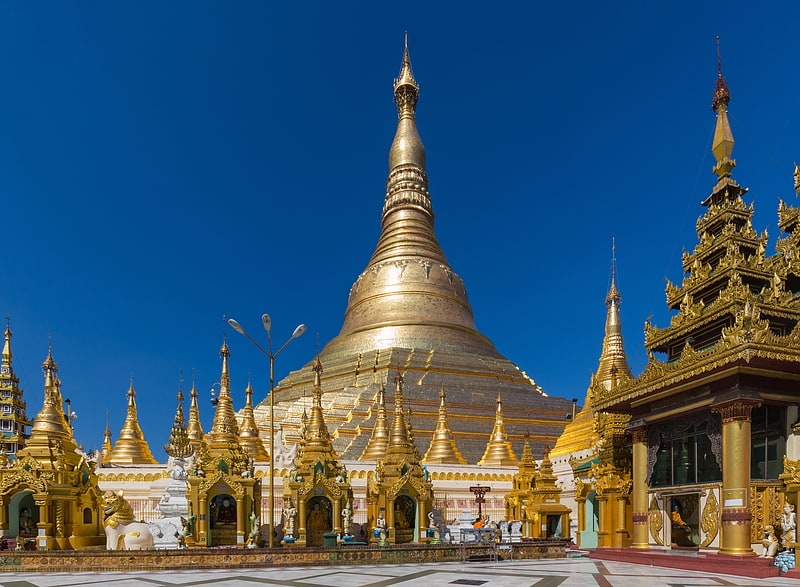
Also known as: ရွှေတိဂုံစေတီတော်
Large gilded stupa with a visitor center. The Shwedagon Pagoda; Mon: ကျာ်ဒဂုၚ်; officially named Shwedagon Zedi Daw and also known as the Great Dagon Pagoda and the Golden Pagoda is a gilded stupa located in Yangon, Myanmar.
The Shwedagon is the most sacred Buddhist pagoda in Myanmar, as it is believed to contain relics of the four previous Buddhas of the present kalpa. These relics include the staff of Kakusandha, the water filter of Koṇāgamana, a piece of the robe of Kassapa, and eight strands of hair from the head of Gautama.
Built on the 51-metre (167 ft) high Singuttara Hill, the 112 m (367 ft) tall pagoda stands 170 m (560 ft) above sea level, and dominates the Yangon skyline. Yangon's zoning regulations, which cap the maximum height of buildings to 127 metres (417 feet) above sea level (75% of the pagoda's sea level height), ensure the Shwedagon's prominence in the city's skyline.[1]
Address: U Htaung Bo Road, Yangon (Western District)
Ananda Temple, Bagan

Also known as: အာနန္ဒာဘုရား
Grand 12th-century Buddhist temple. The Ananda Temple, located in Bagan, Myanmar is a Buddhist temple built in 1105 AD during the reign of King Kyansittha of the Pagan Dynasty. The temple layout is in a cruciform with several terraces leading to a small pagoda at the top covered by an umbrella known as hti, which is the name of the umbrella or top ornament found in almost all pagodas in Myanmar. The Buddhist temple houses four standing Buddhas, each one facing the cardinal direction of East, North, West and South. The temple is said to be an architectural wonder in a fusion of Mon and adopted Indian style of architecture. The impressive temple has also been titled the "Westminster Abbey of Burma". The temple has close similarity to the Pathothamya temple of the 10th–11th century, and is also known as “veritable museum of stones”.
The temple was damaged in the earthquake of 1975. However, it has been fully restored and is well maintained by frequent painting and whitewashing of the walls. On the occasion of 900th anniversary of its construction celebrated in 1990 the temple spires were gilded. It is a highly revered temple of Bagan.[2]
Mandalay Palace, Mandalay
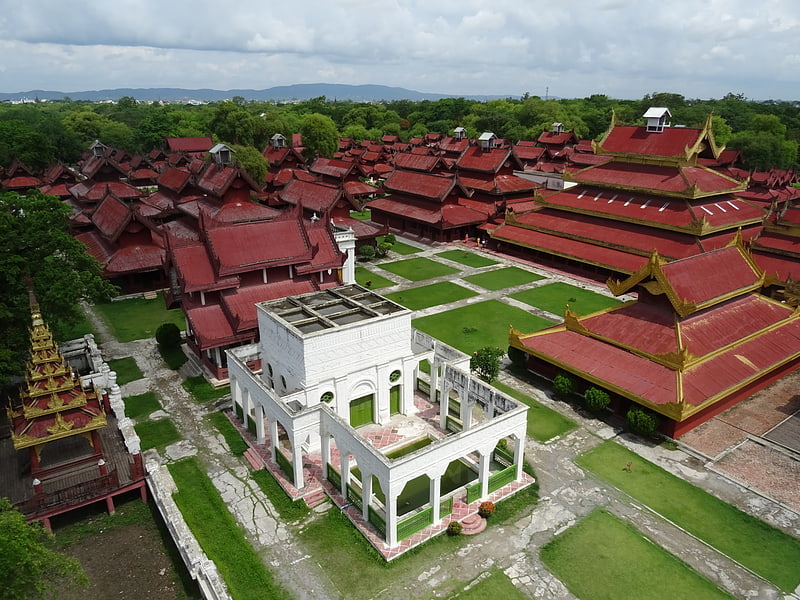
Also known as: မန္တလေး နန်းတော်
Palace with towers, mausoleums and more. The Mandalay Palace, located in Mandalay, Myanmar, is the last royal palace of the last Burmese monarchy. The palace was constructed between 1857 and 1859 as part of King Mindon's founding of the new royal capital city of Mandalay. The plan of Mandalay Palace largely follows the traditional Burmese palace design, inside a walled fort surrounded by a moat. The palace itself is at the centre of the citadel and faces east. All buildings of the palace are of one storey in height. The number of spires above a building indicated the importance of the area below.
Mandalay Palace was the primary royal residence of King Mindon and King Thibaw, the last two kings of the country. The complex ceased to be a royal residence and seat of government on 28 November 1885 when, during the Third Anglo-Burmese War, troops of the Burma Field Force entered the palace and captured the royal family. The British turned the palace compound into Fort Dufferin, named after the then viceroy of India. Throughout the British colonial era, the palace was seen by the Burmese as the primary symbol of sovereignty and identity. Much of the palace compound was destroyed during World War II by allied bombing; only the royal mint and the watch tower survived. A replica of the palace was rebuilt in the 1990s with some modern materials.
Today, Mandalay Palace is a primary symbol of Mandalay and a major tourist destination.[3]
Address: Mandalay Grand Royal Palace, Mandalay
Shwegugyi Temple, Bagan
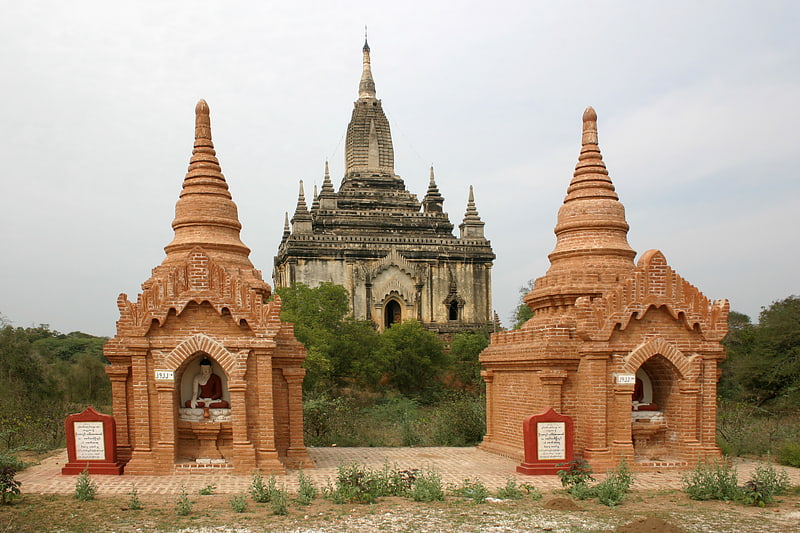
Temple in Bagan, Myanmar (Burma). The Shwegugyi Temple is a Theravada Buddhist temple in Bagan, Myanmar. The temple is recognized as Monument #1589 in the Bagan Archeological Area, a UNESCO World Heritage Site.
Located just to the southeast of what apparently were the ruins of the former royal palace founded by King Kyansittha (r. 1084–1113), the temple was built by King Sithu I of Pagan (Bagan) in 1131. According to the stone inscriptions at the temple, set up in 1141, construction work on the temple began on 17 May 1331, and was completed on 17 December 1331. Built on an expansive 3 m (9.8 ft) tall brick foundation, the temple is known for its arched windows, and fine stucco and carved wooden doors in the interior.[4]
Address: Next to that-byin-nyu temple, Bagan
Zegyo Market, Mandalay
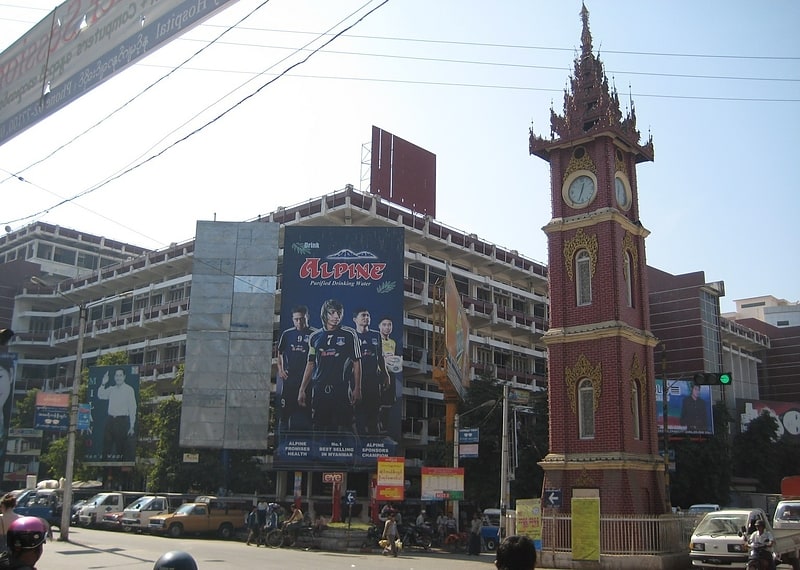
Also known as: ဈေးချိုတော်
Market in Mandalay, Myanmar. Zegyo Market, located in central Mandalay, is the oldest and most important market in Mandalay.[5]
Address: 84th Street, Mandalay
Kandawgyi Lake, Yangon

Also known as: ကန်တော်ကြီး
Reservoir and park with pagoda views. Kandawgyi Lake, is one of two major lakes in Yangon, Burma. Located east of the Shwedagon Pagoda, the lake is artificial; water from Inya Lake is channelled through a series of pipes to Kandawgyi Lake. It was created to provide a clean water supply to the city during the British colonial administration. It is approximately 5 miles in circumference, and has a depth of 20 to 45 inches.
The 150-acre (61 ha) lake is surrounded by the 110-acre (45 ha) Kandawgyi Nature Park, and the 69.25-acre (28-hectare) Yangon Zoological Gardens, which consists of a zoo, an aquarium and an amusement park.
The lake itself is bounded by Natmauk Street to its north and east, Bahan Street to its west, and Kanyeiktha Street to its south. The lake used to be the site of the Rangoon Rowing Club turned Kandawgyi Palace Hotel, which was gutted by a fire in 2017. Along the eastern shorelines of the lake is the famous Karaweik, a concrete replica of a Burmese royal barge built in 1972. It houses a buffet restaurant today.
On 15 April 2010, three bombs exploded in a road near to the lake in the afternoon during the Burmese New Year festival; 10 people were killed and 178 injured.[6]
Address: Kan Yeik Tha Rd, Nat Mauk St, Yangon (Western District)
Mingun Pahtodawgyi, Mandalay
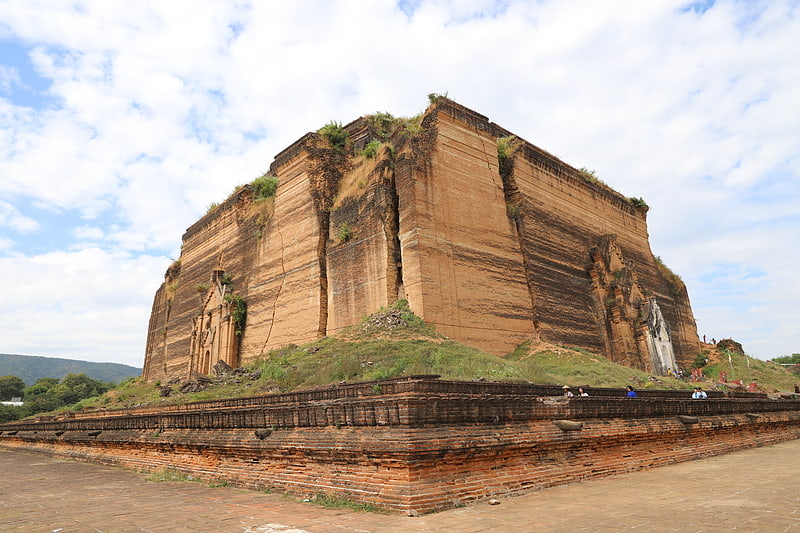
Also known as: မင်းကွန်းပုထိုးတော်ကြီး
Pagoda in Mingun, Myanmar (Burma). The Mingun Pahtodawgyi is an incomplete monument stupa in Mingun, approximately 10 kilometres northwest of Mandalay in Sagaing Region in central Myanmar. The ruins are the remains of a massive construction project begun by King Bodawpaya in 1790 which was intentionally left unfinished. The Pahtodawgyi is seen as the physical manifestation Bodawpaya's well-known eccentricities. He set up an observation post on an island off Mingun to personally supervise the construction of the temple.[7]
Sulamani Temple, Bagan

Also known as: စူဠာမဏိဘုရား
Temple in Myanmar. The Sulamani Temple is a Buddhist temple located in the village of Minnanthu in Burma. The temple is one of the most-frequently visited in Bagan.
It was built in 1183 by King Narapatisithu, and is similar to the Thatbyinnyu Temple in design. The Sulamani Temple also shows influence from the Dhammayangyi Temple, and was the model for the Htilominlo Temple. Sulamani Temple was restored after the 1975 earthquake, and utilises brick and stone, with frescoes in the interior of the temple. It was rebuilt in 1994.[8]
Sule Pagoda, Yangon
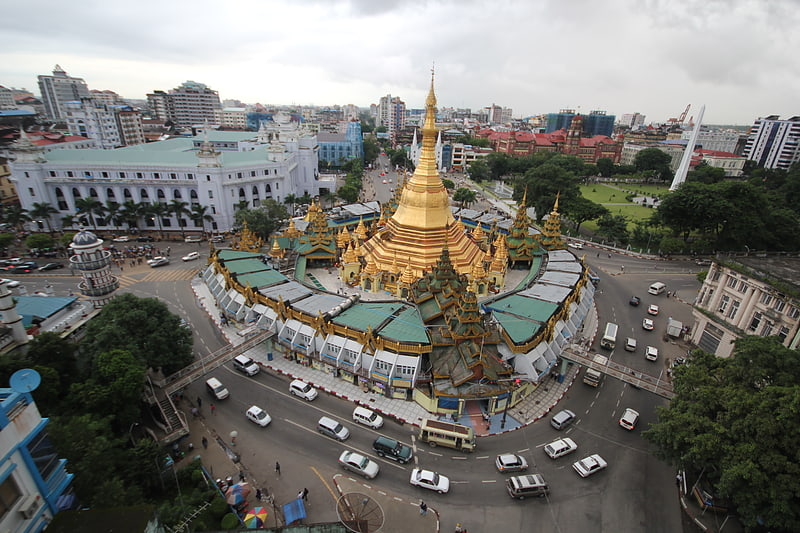
Also known as: ဆူးလေစေတီတော်
Golden Buddhist pagoda with statues. The Sule Pagoda is a Burmese stupa located in the heart of downtown Yangon, occupying the centre of the city and an important space in contemporary Burmese politics, ideology and geography. According to legend, it was built before the Shwedagon Pagoda during the time of the Buddha, making it more than 2,600 years old. Burmese legend states that the site for the Shwedagon Pagoda was asked to be revealed from an old nat who resided at the place where the Sule Pagoda now stands.
The Sule Pagoda has been the focal point of both Yangon and Burmese politics. It has served as a rallying point in the 1988 uprisings, 2007 Saffron Revolution and 2021 Spring Revolution.
The pagoda is listed on the Yangon City Heritage List.[9]
Address: Maha Bandoola Rd 95-1, Yangon (Downtown)
Phowintaung, Monywa
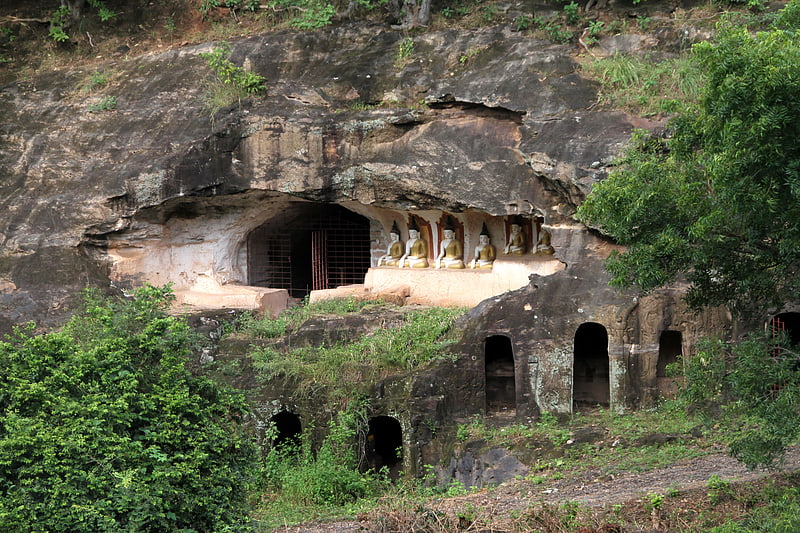
Also known as: ဖိုလ်ဝင်တောင်
Phowintaung is a Buddhist cave complex located approximately 25 kilometres west of Monywa and 10 kilometres southeast of Yinmabin, in Yinmabin Township, Monywa District, Sagaing Region, Northern Burma. It is located on the western bank of the Chindwin River. The name of the complex means Mountain of Isolated Solitary Meditation.
The complex contains 947 small and large richly decorated caves. It is carved into a sandstone outcrop and contains numerous carved Buddha statues and mural paintings of geometric patterns and Jataka stories. The statues and paintings have been dated to between the 14th and 18th centuries.[10]
Shwemawdaw Pagoda, Bago

Also known as: ရွှေမော်ဓောဘုရား
Temple in Bago, Myanmar (Burma). The Shwemawdaw Pagoda is a stupa located in Bago, Myanmar. It is often referred to as the Golden God Temple. At 114 metres in height, the Shwemadaw holds the record for the tallest pagoda in the country although the Shwedagon Pagoda in Yangon is usually credited as the tallest pagoda in Myanmar. Shwemadaw, along with the Shwedagon and Kyaiktiyo, are famous Mon pagodas. The annual pagoda festival is a 10-day affair that takes place during the Burmese month of Tagu.[11]
Uppatasanti Pagoda, Naypyidaw

Also known as: ဥပ္ပါတသန္တိ စေတီတော်
Pagoda in Myanmar. Uppātasanti Pagoda is a prominent landmark in Naypyidaw, the capital of Myanmar. The pagoda houses a Buddha tooth relic from China. It is nearly a same-sized replica of Shwedagon Pagoda in Yangon and stands 99 metres tall.[12]
Shwethalyaung Temple, Bago
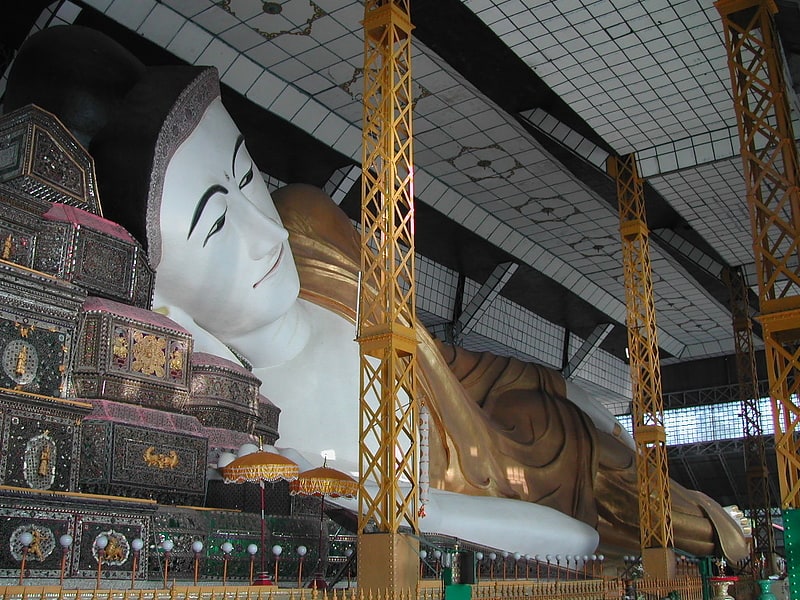
Also known as: ရွှေသာလျောင်း ရုပ်ပွားတော်ကြီး
Temple in Bago, Myanmar (Burma). The Shwethalyaung Temple (Burmese: ရွှေသာလျှောင်းဘုရား is a Buddhist temple in the west side of Bago, Myanmar.[13]
Kanbawzathadi Palace, Bago
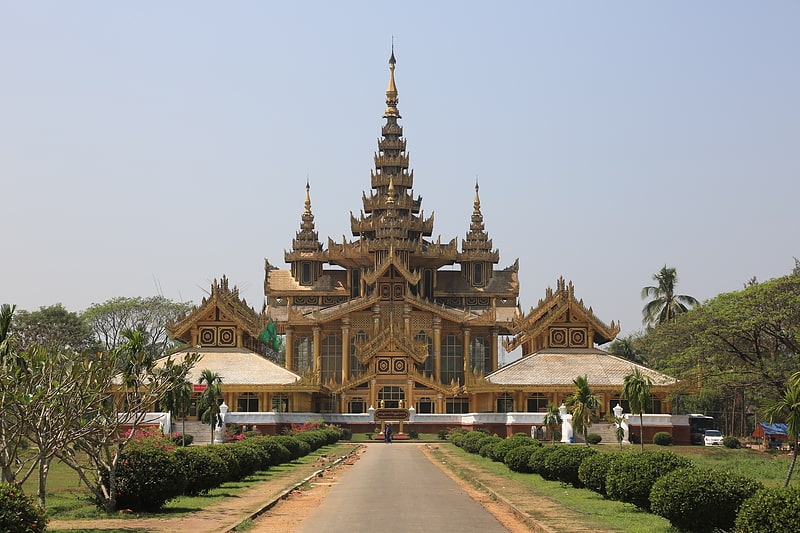
Also known as: ကမ္ဘောဇသာဒီ နန်းတော်
Palace. Kanbawzathadi Palace is a palace in Bago, Myanmar. The original palace, built for King Bayinnaung in 1556, consisted of 76 apartments and halls. It was burned down in 1599. It was reconstructed in 1990 and finished in 1992.
Kanbawzathadi Golden Palace in Bago is a reconstruction of the original Royal palace from the second half of the 16th century.
The very ornate golden palace gives a good impression of the splendor and wealth of the second Burmese empire. It was rebuilt following the original design, based on knowledge gained from excavations and the original drawings of the building. The huge palace consisted of 76 apartments and halls.
The reconstructed palace does not contain much of the original furniture and personal items used by the Royals, as most of it was lost when the palace was looted and destroyed in 1599. There are several reproductions on display, like a replica of the King’s golden coach, decorated with two peacocks and a Pyatthat style roof.[14]
Kyaikthanlan Pagoda, Mawlamyine
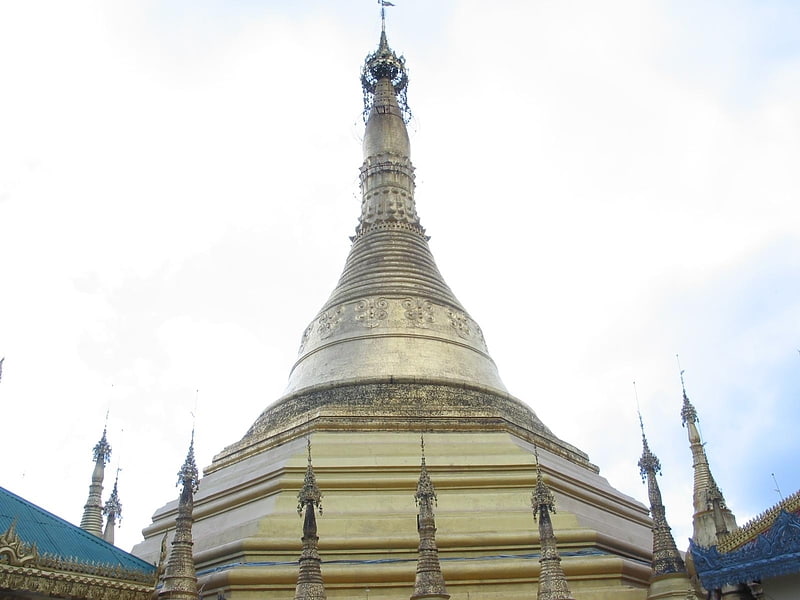
The Kyaikthanlan Pagoda is the tallest Buddhist pagoda in Mawlamyine, Mon State, Myanmar, standing at a height of 150 feet.
Built in 875 AD during the reign of Mon King Mutpi Raja, the pagoda was raised from its original height of 56 feet (17 metres) to the present 150 feet (46 metres) by successive kings including Wareru, founder of the Hanthawaddy Kingdom. In 1764 (1125 ME), General Maha Nawrahta of the Royal Burmese Army repaired the pagoda but couldn't finish it. In 1831, to prevent Moulmein's identity from fading away, Sitke Maung Htaw Lay, who later served as Magistrate of Moulmein restored the pagoda with the funds raised by public subscriptions. Situated on the range of hill, the pagoda commands the stunning view of the city, nearby islands, Gulf of Martaban, surrounding rivers and the limestone mountains of Kayin State in the east. Rudyard Kipling is believed to have written his famous "Lookin' lazy at the sea" line from "The Road to Mandalay" poem at this pagoda.[15]
Address: Taung Yoe Dan Street, Mawlamyine
Naypyidaw Water Fountain Garden, Naypyidaw
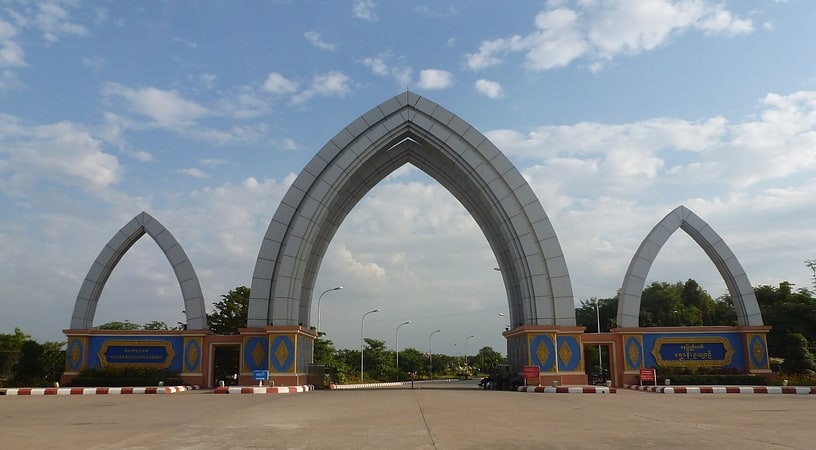
The Naypyidaw Water Fountain Garden is a garden in Naypyidaw, Myanmar. The 165-acre garden is situated near the Naypyidaw City Hall with a steel structure arch-way. Also included in the garden are a main pond with three fountains and 11 small ponds with 13 different fountains, a 30-foot high clock tower, nine recreation centres, two small gardens, two stone gardens and ten feet wide buggy road and footpaths. The garden was set up near the Naypyidaw-Taungnyo Road.[16]
Naypyidaw Zoological Gardens, Naypyidaw
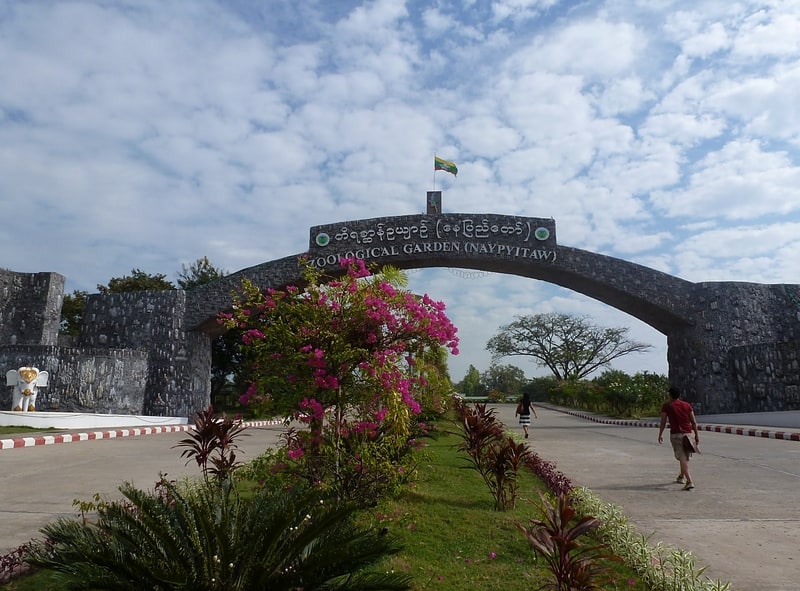
Also known as: တိရစ္ဆာန်ဥယျာဉ်
Zoo with tigers, giraffes and penguins. The Naypyidaw Zoological Gardens located in Naypyidaw is the largest zoo in South East Asia. Located on the Yangon-Mandalay highway about 250 miles north of Yangon, the 612-acre zoo opened its doors on Myanmar's Armed Forces Day in 2008 with about 420 animals trucked in from the Yangon Zoological Gardens.
The zoo has elephants, crocodiles, tigers, deer, leopards, monkeys as well as white tigers, zebras, and kangaroos. It also comes complete with an air-conditioned penguin house in a country of persistent power shortages.
In December 2009, the zoo had 634 animals of 89 species, including 304 from 34 different mammal species; 265 from 44 bird species; and 65 from 11 reptile species.[17]
Shite-thaung Temple, Mrauk U
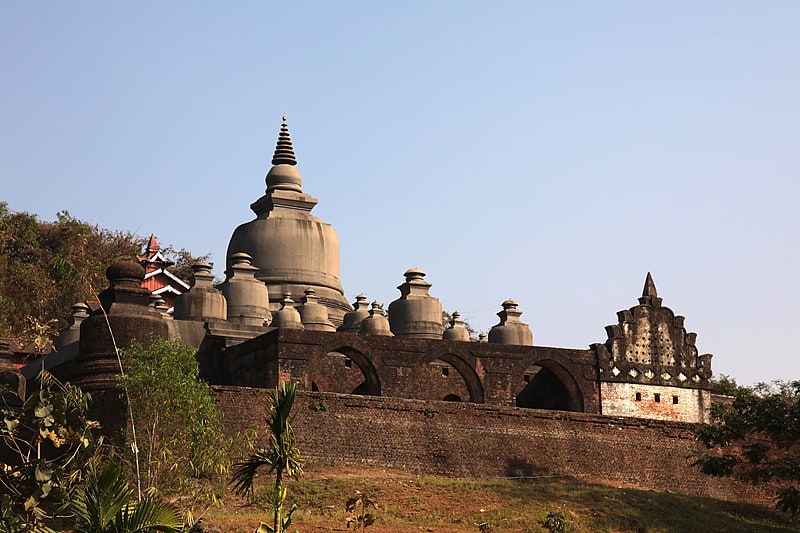
Also known as: သျှစ်သောင်းပုထိုးတော်ကြီး
Temple in Mrauk U, Myanmar (Burma). The Shaitthaung Temple, also spelled Shitthaung according to Standard Burmese pronunciation, is a famous temple in Mrauk U. The name means 'Temple of 80,000 Buddha Images', and is also known as the 'Temple of Victory'.[18]
Nyidaw Temple, Mrauk U
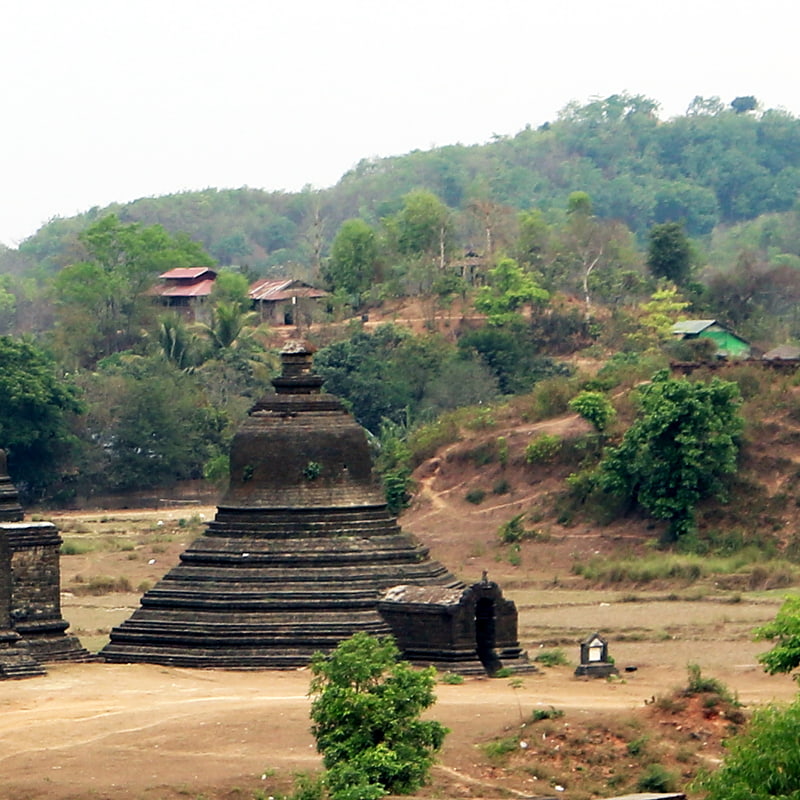
Temple. Nyi Taw Temple is a temple in Mrauk U, Myanmar. It was built by Min Khayi, the second king of Mrauk-U Kingdom in AD 1433. It is situated next to Le-myet-hna Temple which was built by his brother Min Saw Mon, the founder of Mrauk-U Kingdom.[19]
Uzina Pagoda, Mawlamyine
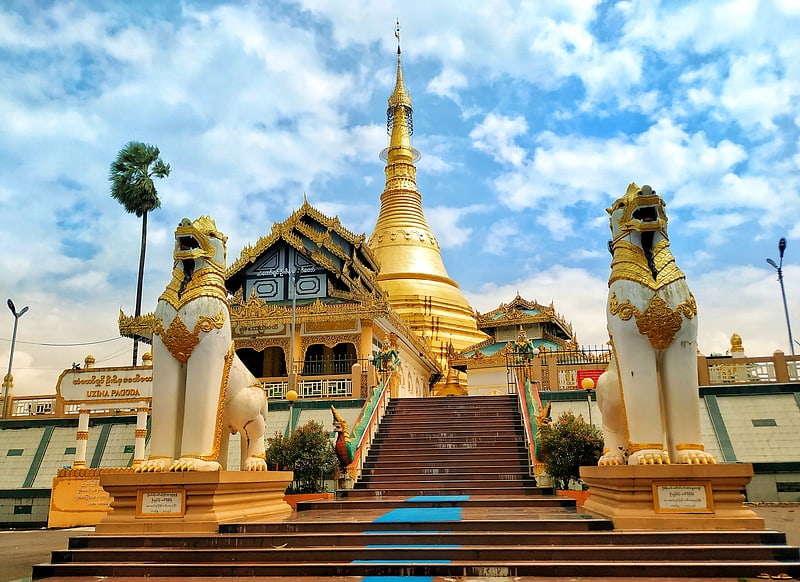
The Uzina Pagoda, also known as the U Zina Pagaoda, is a Buddhist temple in Mawlamyine, Mon State, Myanmar. Built in the 19th century, the temple contains hairs allegedly from the Buddha, and contains several sculptures symbolizing scene's from the Buddha's life. The temple itself is often associated with gemstones and wish fulfillment.[20]